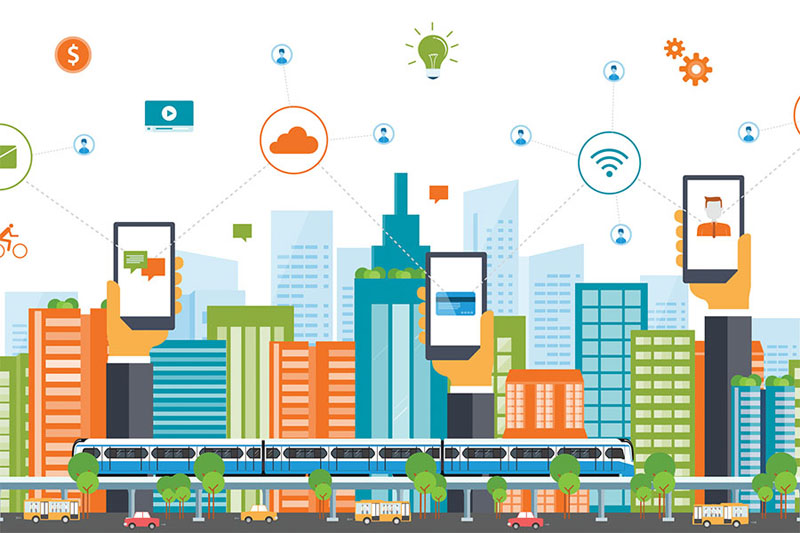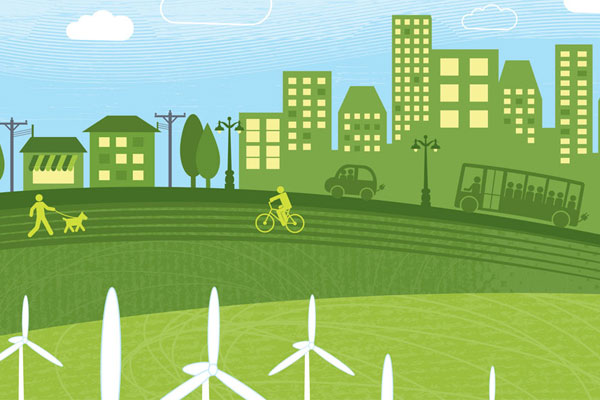Modern use of the term sustainability is broad and difficult to define precisely. Originally, sustainability meant making only such use of natural, renewable resources that people can continue to rely on their yields in the long term. Healthy ecosystems and environments are necessary for the survival of humans and other organisms. Ways of reducing negative human impact are environmentally-friendly chemical engineering, environmental resources management, environmental protection, and human population control. Information is gained from green computing, green chemistry, earth science, environmental science and conservation biology. Ecological economics studies the fields of academic research that aim to address human economies and natural ecosystems.
Moving towards sustainability is also a social challenge that entails international and national law, urban planning and transport, supply chain management, local and individual lifestyles and ethical consumerism. Ways of living more sustainably can take many forms from reorganizing living conditions (e.g., ecovillages, eco-municipalities and sustainable cities), reappraising economic sectors (permaculture, green building, sustainable agriculture) or work practices (sustainable architecture), using science to develop new technologies (green technologies, renewable energy and sustainable fission and fusion power) or designing systems in a flexible and reversible manner and adjusting individual lifestyles that conserve natural resources.
The term sustainability’ should be viewed as humanity’s target goal of human-ecosystem equilibrium, while ‘sustainable development’ refers to the holistic approach and temporal processes that lead us to the endpoint of sustainability. Despite the increased popularity of the use of the term “sustainability,” the possibility that human societies will achieve environmental sustainability has been, and continues to be, questioned-in light of environmental degradation, climate change, overconsumption, population growth and societies’ pursuit of unlimited economic growth in a closed system.

Advantages of sustainability in smart city
The adoption of sustainability is a must for smart city provision and it is modeled in every phase of smart city life. Smart city projects should not be confined to particular areas, preferably should be implemented more radically, to specific problem areas where it gets easier to find a solution. This ensures that a smart city strategy improves and enhances life quality inclusively and equitably.
Sustainable, in reference to smart cities, is ideally about projects which implement ‘Green Building’ concepts within an existing city. Being an eco-friendly and sustainable township is also about recycling garbage to form compost for gardens, to create methane gas to power utilities, to harness wind and solar power to provide a part of power requirements. It is also about charging the water table through rain water harvesting, as also sewage treatment which provides treated sewage in form of water for gardens and construction/ cleaning purposes. It is about smart architecture which ensures being in sync with wind and natural light resources, so that load on HVAC and luminaries is reduced. This is the best manner of ensuring that new conglomerations turn out to be smart cities. It is important to focus on areas like air and water pollution control, sewage disposal, connectivity that ensures low pollution emission on the roads, a maintenance and management system which includes e-governance and internet-based solutions for citizens and also using construction material that is ‘eco-friendly’ which should not create ecological imbalance.
A smart city could also do things such as measure water levels, average consumption and weather patterns – like a drought – to better manage our supply. It could even track waste patterns to help to optimize recycling and cut back on the amount of waste we use as a society. Both of these scenarios would require the smart city to constantly monitor activities and collect data. All of that data is what we refer to as ‘big data,’ and it’s what would allow the city to be sustainable and react.

Given below are few of the benefits of adoption of sustainability.
- With the gradual rise in global warming, greenhouse effect, debris in oceans and trash in streets, smart cities are making an effort to fight against the adverse effects of the environment. The energy-efficient building, air-quality sensors, and renewable energy resources are providing an alternative to cities to shrink the ecological impact.
- Air quality sensors in the city can help to determine and track the low quality of the air and identify pollution causes, and deliver relevant data so that appropriate actions can be taken. These sensors are so far helpful in reducing air pollution in the populated cities.
- Effective big data applications make it easier to lessen the risk factors in the city; it helps to identify and staff the police in high-risk areas, as well as they can forecast and plan for expansion in the citywide population growth and identify trends, interests, concerns, and needs of the citizens. This enables stronger decision making and enhances the lives of residents by cutting down costs and improving services.
- Aging roads, bridges, buildings often require a large amount of investment to maintain and repair over their service lives. Smart technology can provide cities with predictive analytics to identify the areas that need to be fixed before the infrastructure failures.
- Smart sensors can deliver data showing the changes in the smart city buildings, identifying the cracks and tilts in the bridges or buildings and sending messages to notify personnel of the need for inspection and maintenance. These can help cities to save massive tax and prevent infrastructure failure.
- The citizens then get the itemised bill that displays their water consumption. The technology has proved to be a viable solution to help conserve valuable resources.
- Smart cities will have fewer cars on the roadway. That means promoting and even offering ride-sharing and bike-sharing services. Public transportation also is a main component of many smart city plans. That also means designing neighborhoods and business areas that are walkable, requiring less time spent in cars.
- Smart street lights use LED lights, which last longer and require less energy to operate. They also can be dimmed or brightened depending on the location and time of day, leading to less energy use while still maintaining safety and security.
Conclusion
Sustainability is a powerful force for positive change in our world; one that is driving transformation, innovation, and improvement across all aspects of society. No longer limited to conserving natural resources, sustainability now encompasses a broad range of challenges, including urban growth, transportation, our carbon footprints, and even people’s work-life balance. As the world’s population is expected to increase by an estimated 33 percent before 2050, and with nearly 70 percent of those people living in urban environments, sustainability has become a focal point for forward-thinking cities.


